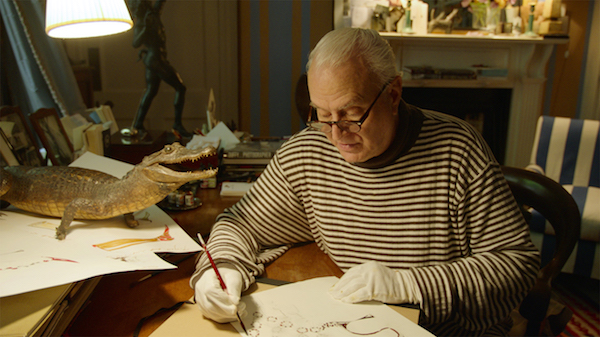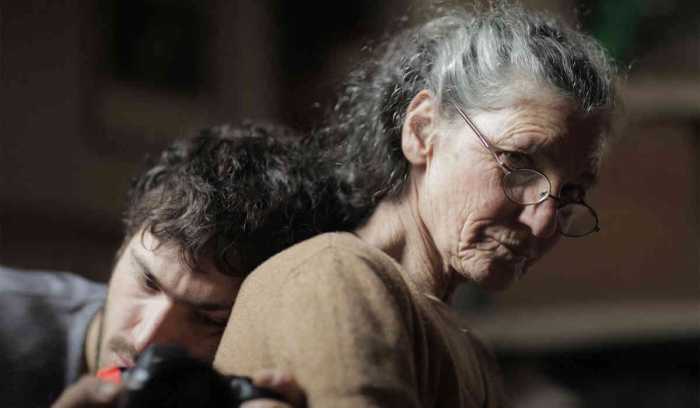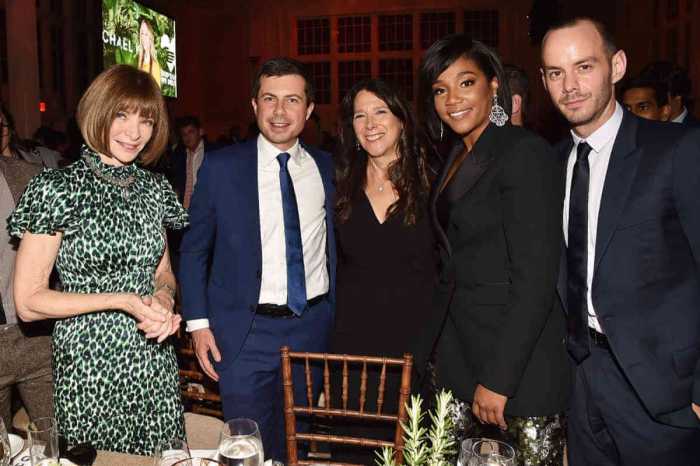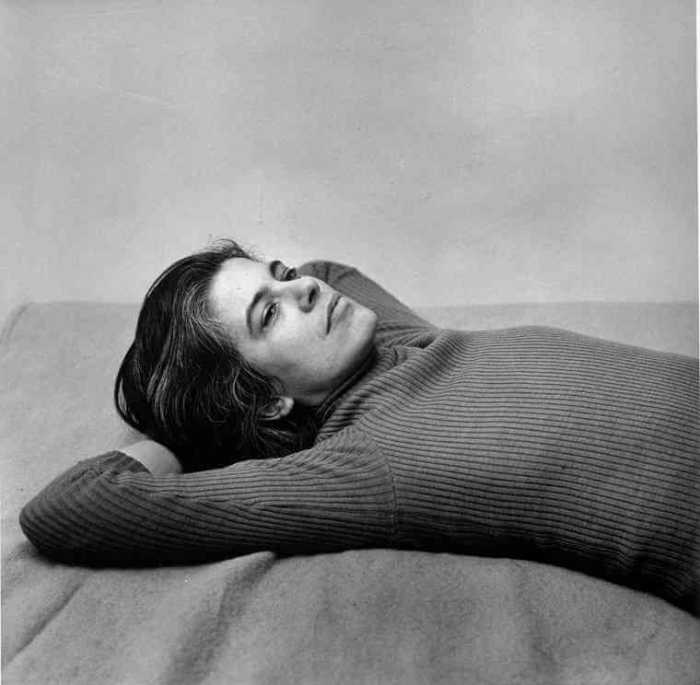Manolo Blahnik at work on a design in Michael Roberts’ “Manolo: The Boy Who Made Shoes for Lizards.” | MUSIC BOX FILMS
Manolo knows shoes. His name is synonymous with high fashion footwear. He has collaborated with designers around the globe, and his pumps, mules, and kitten heels have been featured in popular culture from “Sex and the City” to Sophia Coppola’s film “Marie Antoinette.”
Now, there is “Manolo: The Boy Who Made Shoes for Lizards,” a documentary — well, hagiography, really — about Manolo Blahnik that struggles to get at the man behind all of the happy feet. Director Michael Roberts’ film opens with Blahnik recounting his carefree childhood in Santa Cruz de Tenerife in Spain’s Canary Islands, where he did, indeed, make shoes for lizards, as the documentary’s subtitle indicates. He describes wonderful parents who dream of him working at the United Nations, before he decamps for the fashion scenes of Paris and London in the 1960s and 1970s.
This backstory helps establish Blahnik as charming, insouciant, fussy, hedonistic, and even a bit arrogant. But these qualities are all what captured the fashion world’s attention. He was demanding and worked hard, and when he met with the esteemed Diana Vreeland — an experience that rendered the chatty shoe designer speechless — his future storied reputation in footwear was guaranteed. Even if his models suffered nobly during his first runway collection — because Blahnik didn’t reinforce his rubber heels with steel support — his shoes were still marvelous.
Michael Robert captures Manolo Blahnik’s style, if not his spirit
“Manolo” traces the designer’s early, heady moments in breezy fashion, allowing viewers to get caught up in the haute couture. Unfortunately, Roberts includes a series of distracting dramatic recreations, such as Manolo (Rick Kissack) wearing a suit that looks like it was stitched together from some Italian restaurant tablecloths. These episodes — including Manolo meeting Vreeland — are meant to bring alive events not otherwise captured on film.
In contrast, the documentary images Roberts offers of young Blahnik from photo shoots and magazine layouts are fun, and are enhanced by comments such as photographer David Bailey recalling that he willingly buried himself up to his neck in the sand for a shoot that Manolo himself seemed unwilling to do.
When Blahnik opens his shop in London, he becomes an instant success. Rupert Everett boasts of purchasing a pair of zebra-skin pumps there, but admits he has never worn them. Perhaps it is because they are more a work of art than a practical pair of shoes for the British actor. Everett’s praise is typical of the reverence the film’s interviewees have for Blahnik. Anna Wintour, André Leon Talley, Paloma Picasso, and dozens of other fashionistas voice their enthusiasm. Isaac Mizrahi gushes about Blahnik’s “sexy pilgrim” shoes, and Rihanna is buoyant about a pair of boots that have to be seen to be believed.
One of the film’s wildest scenes has Blahnik reuniting with John Galliano. The two designers collaborated on a famous fashion event earlier in their careers, and their reminiscences are accompanied by clips of the models from what was clearly a magical show.
“Manolo” is best when it focuses on the fashion. A brief scene of the shoes being hand-made is lovingly done. Likewise, when Roberts displays a montage of Blahnik’s products late in the film, viewers can truly appreciate the fancy fantasy footwear. Seeing the high heels and the “toe cleavage” will leave some viewer salivating, and the artistry of Blahnik’s brand will be clear even to viewers who can’t tell a pump from a mule.
These shoe porn moments are not just for foot-fetishists. Blahnik discusses his appreciation of classical Roman and Greek statues, where the feet are a focus. For the designer, it is all about the beauty. A too-lengthy sequence about the influence African art and the Marlene Dietrich film “Blonde Venus” had on the designer obscures the underlying point that Blahnik pulls disparate elements together to create fresh designs. That message could have been conveyed less clumsily.
If Roberts never quite gets at the true character of Blahnik — his private life is never really discussed — that may be because the designer wasn’t really interested in being the subject of a film. Blahnik is a bit cagey in the film’s opening scenes, and he rarely lets Roberts in. A scene in which Blahnik is filmed signing books while being interviewed by a reporter suggests Roberts himself had limited access to him. Even scenes at Blahnik’s home in the famous Royal Crescent of terraced houses in Bath, England, are slight and underdeveloped by comparison to the numerous films about other fashion designers.
For the legions of fans who will see “Manolo,” the film’s drawbacks may not be an issue, except that they take away from the time spent showcasing the shoes. Roberts’ film allows us far more insight into Blahnik’s style than into the designer himself.
MANOLO: THE BOY WHO MADE SHOES FOR LIZARDS | Directed by Michael Roberts | Music Box Films | Opens Sep. 15 | Landmark Sunshine Cinema, 143 E. Houston St., btwn First & Second Aves. | landmarktheatres.com





































